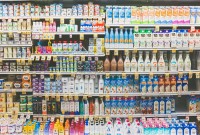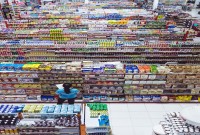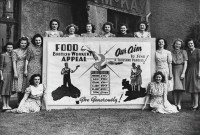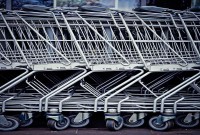- Home
- Business Processes
- Industry Knowledge
- Aerospace Industry
- Automotive Industry
- Banking Domain
- BFSI Industry
- Consumer/ FMCG Industry
- Chemicals Industry
- Engineering & Construction
- Energy Industry
- Education Domain
- Finance Domain
- Hospitality Domain
- Healthcare Industry
- Insurance Domain
- Retail Industry
- Travel and Tourism Domain
- Telecom Industry
- Leadership Skills
- eLearning
- Home
- Domain Knowledge
- Consumer/ FMCG Industry
- Consumer Goods Sector
Consumer Goods Sector
The consumer goods sector is a category of stocks and companies that relate to items purchased by individuals and households rather than by manufacturers and industries. These companies make and sell products that are intended for direct use by the buyers for their own use and enjoyment. This sector includes companies involved with food production, packaged goods, clothing, beverages, automobiles, and electronics. Nestle, Procter & Gamble, and Pepsico are some of the world’s largest consumer goods companies in the world.
Given below are the important characteristics of the consumer goods sector:
- Companies under this sector manufacture and sell products for consumer use
- Companies need to focus on Marketing, advertising, and brand differentiation
- Technological trends are changing the industry landscape
- Performance in the consumer goods sector depends heavily on consumer behavior
- Developing new flavors, fashions, and styles and marketing them to consumers is a priority
Understanding the Consumer
A consumer is a person or group of people that are the final users of products and or services generated within a social system. A consumer may be a person or group, such as a household. The concept of a consumer may vary significantly by context but here in this section, we will discuss both durable and non-durable goods.
The ancient man moved from place to place to hunt for food. He ate whatever he could find, such as fruits, nuts, vegetables, sweet-roots, and flesh of animals. He made use of wood and dry leaves from forests to make a fire to keep him warm and also to tenderize the meat he hunted.
Today man has evolved into a seasoned producer and consumer of a large variety of goods and services. At present some people produce the goods and provide services required by others in exchange for money in a well-developed market system. Thus, the concept of a person buying a product or obtaining services from the market for his own use or consumption comes into practice.
A consumer is defined as a person who buys goods and services and makes use of public utilities as well as natural resources like air and water. In its most basic sense, it refers to those who buy for their own wants thus excluding buyers who purchase for manufacturing purposes or for resale. It does not include a person who obtains such goods for resale or for any commercial purpose.
The main characteristics of the definition of the consumer can be stated as follows:
- A consumer is one who consumes either goods or hires or avails of any services.
- One who buys any goods for a consideration
- One who uses such goods with the approval of the buyer
- One who hires any service or services for consideration.
- One who is the beneficiary of such service
- Only a person who buys goods for private use or conception only is a consumer
Consumer Goods
Also known as final goods, consumer goods are products bought for consumption by the average consumer. Entrepreneurs and businesses combine capital goods (such as machinery in a factory), labor from workers, and raw materials (such as land and basic metals), to produce consumer goods for sale. Goods that are used in these production processes, but not themselves sold to consumers are known as producer goods.
- Consumer goods are the end result of production and manufacturing
- These goods are what a consumer will see stocked on the store shelf.
- Sold to consumers for their own use or enjoyment
- These goods are not meant for resale or for further economic production activity
- They are called end product because they are the ultimate output of a productive process that occurs over time
Examples of Consumer Goods
Basic or raw materials, such as copper, are not considered consumer goods because they must be transformed into usable products. Clothing, food, and jewelry are all examples of consumer goods. Let's consider a few items you could easily purchase: milk, television, and lumber. You would most likely want to immediately consume milk; therefore, it is a consumer good. For the Wine industry, the grapes are input to making the wine; therefore in this example, the wine will be the consumer good while the grapes would be a producer good.
Consumer Buying Motives
A number of factors influence the purchase behavior of a consumer. Generally, a consumer is not a rational choice maker because of various pressurizing and persuading factors. Besides factors pertaining to the need and behavior of consumers in making choices, there are a number of influences that affect buyers' decisions about the products and services they select. These are income, age, sex, family size, social status, employment status, mobility habits, educational status, and environment.
There are many influences internal and external which affect buying decisions cost, availability, season, demand, environment influences, habit, hobbies, etc. In the modem day market, one of the most influencing factors is advertising. Business spends huge amounts of money on advertising their products and services projecting for a life.
Thus producers are able to use tool influence the motives and creating demand for not consumers.
Consumer Goods Industry
Consumer goods have been around since the earliest days of civilization and have now evolved into high-tech factories addressing a large portfolio of consumer products. This industry produces goods that the public wants or needs and could be durable and nondurable. Consumer products ranging from daily use goods such as shoes and pens and pencils to cutting-edge technology such as iPads and smartphones. The companies producing these goods are located in every state and throughout the world. Manufacturers range from massive, multinational corporations to small firms. This industry has close relationships with other industries, including transportation, packaging, agriculture, chemicals, plastics, rubber; metal, stone, ceramics, and petroleum for raw products or for marketing or transportation of final output.
The growth of this industry depends largely on the strength of the economy. If the economy is good people tend to spend money on high-end consumer goods such as cars and high-end electronics. A strong economy drives purchases in every category.
Related Links
You May Also Like
-
Retail Industry Sectors: Types of Retail
A marketplace is a location where goods and services are exchanged. The traditional market square is a city square where traders set up stalls and buyers browse the merchandise. Now retail goods are generally sold in a number of different establishments. Convenience Stores, specialty stores, department stores, supermarkets & hypermarkets, discount stores, multichannel stores are some models used by the retail industry to provide goods to end customers.
-
FMCG or consumer packaged goods (CPG) are products that are sold quickly and at relatively low cost, examples include non-durable goods such as soft drinks, toiletries, and grocery items. They generally sell in large quantities, so the cumulative profit on such products can be substantial and these industries often operate on thin margins.
-
From an economic standpoint, there are three main types of consumer goods: durable goods, nondurable goods, and services. For marketing purposes, consumer goods can be grouped into different categories based on consumer behavior, how consumers shop for them, and how frequently consumers shop for them. One of the largest consumer goods groups is called fast-moving consumer goods. This segment includes nondurable goods like food and drinks that move rapidly through the chain from producers to distributors and retailers than on to consumers.
-
All of us are consumers, from cradle to grave, to be more precise, from the womb to grave or cremation. In a sense, the history of the consumer is the history of mankind. Consumers are the largest economic group in any country. They are the central point of all of our economic activities. But the very same consumers ate the most voiceless group also. The nature of consumer in terms of needs, consumption patterns, and problems has been changing and evolving along with the social and economic development in the course of history.
-
Competitive Landscape of Retail Industry
In an increasingly competitive landscape, retail industry players must compete in a number of ways. In this article, we will learn about the competitive landscape of the retail industry. Learn the key players in the retail industry and their business profile. Learn more about the top 5 industry players. Competition is rough, especially for the small business. Knowing how business stacks up to the competition is important to your business strategy.
-
Retailing is the combination of activities involved in selling or renting consumer goods and services directly to ultimate consumers for their personal or household use. In addition to selling, retailing includes such diverse activities as, buying, advertising, data processing, and maintaining inventory. This article explains the meaning of retail and its etymology. Understand the meaning and constituents of the retail industry and the role it plays in the economy of any nation.
-
Retail Industry - Business Model
A retail business model articulates how a retailer creates value for its customers and appropriates value from the markets. In retail, a business model would dictate the product and/or services offered by the retailer, the pricing policy that he adopts. Many different types of retail establishments exist, and, the overall industry has seen a significant blurring of the boundaries that separated the wide range of retail businesses. Understand the key business models adopted by the retail industry. Understand the distinctive ways that retail industry players use to reach to the end consumer.
-
Retail Industry: Strategies for overcoming challenges
To stay competitive in this ever-evolving landscape, it is imperative for retailers to deliver a seamless customer experience and provide the right services and products at the right time. Learn the strategies for overcoming challenges for the retail industry. Retailers must use technology and solutions to revive their businesses in the COVID-19 world. An omnichannel marketing strategy can help retailers reach a wider audience for their brands.
-
Business Dynamics of Consumer Industry
The consumer goods industry is impacted by many dynamics like economic considerations, product considerations, price considerations that impact consumer buying choices. Advertisements, branding, marketing, variety of goods, and technology are the main drivers. Manufactures, retailers, warehousing, and logistics are all part of the supply chain for the consumer goods industry.
-
Durable goods are consumer goods that have a long life span (e.g. 3+ years) and are used over time. Highly durable goods such as refrigerators, cars, or mobile phones usually continue to be useful for three or more years of use, and hence durable goods are typically characterized by long periods between successive purchases.
Explore Our Free Training Articles or
Sign Up to Start With Our eLearning Courses

About Us
Learning
© 2023 TechnoFunc, All Rights Reserved









